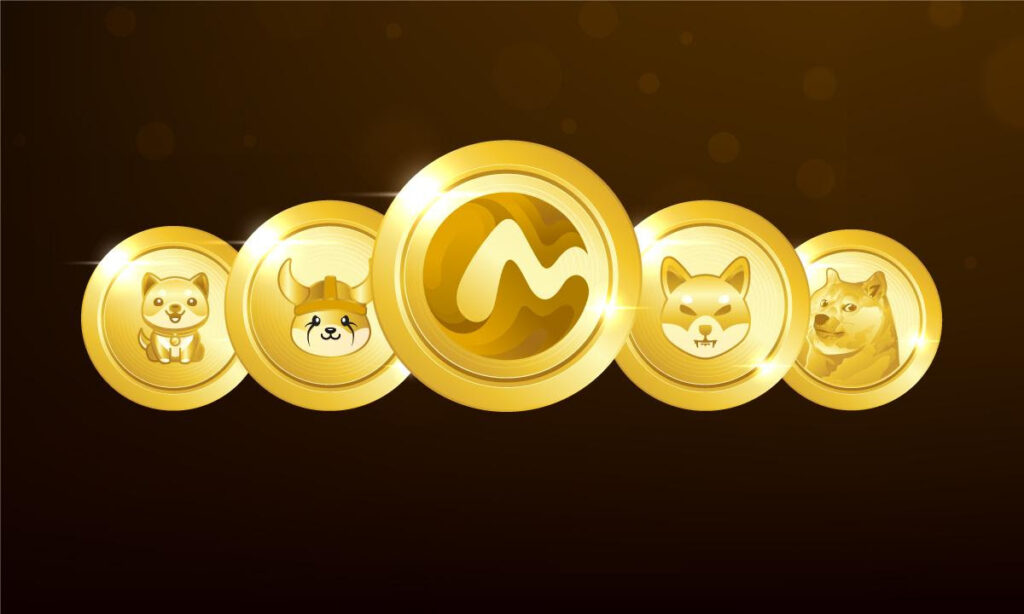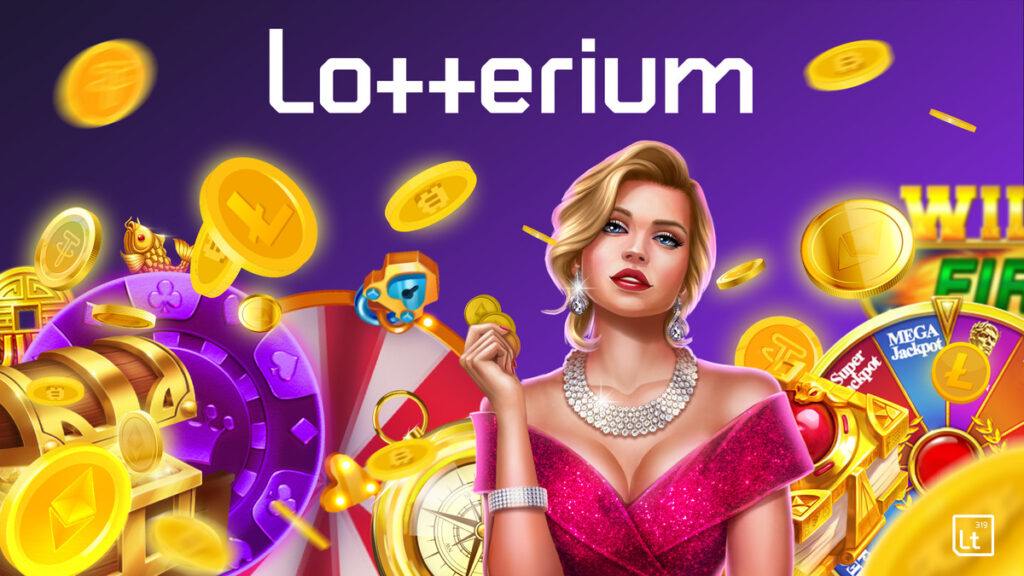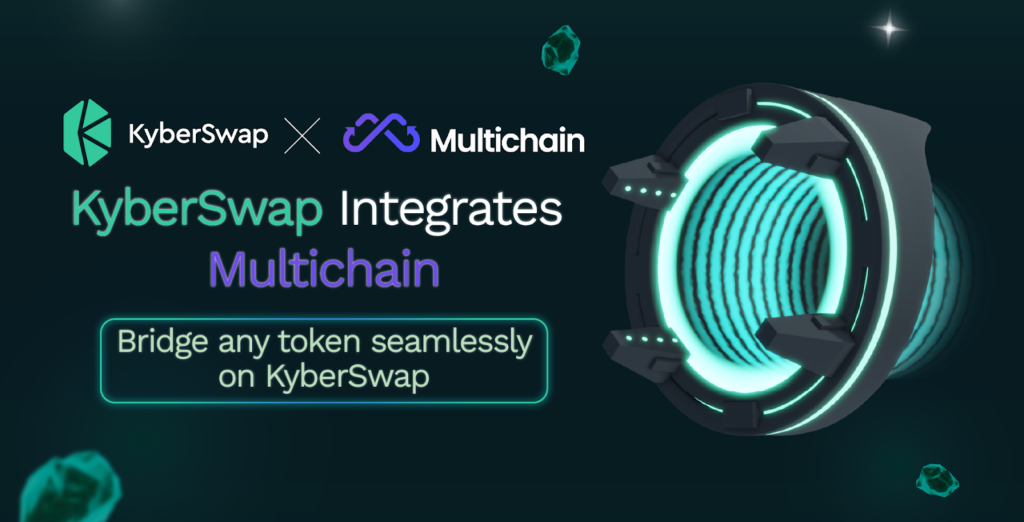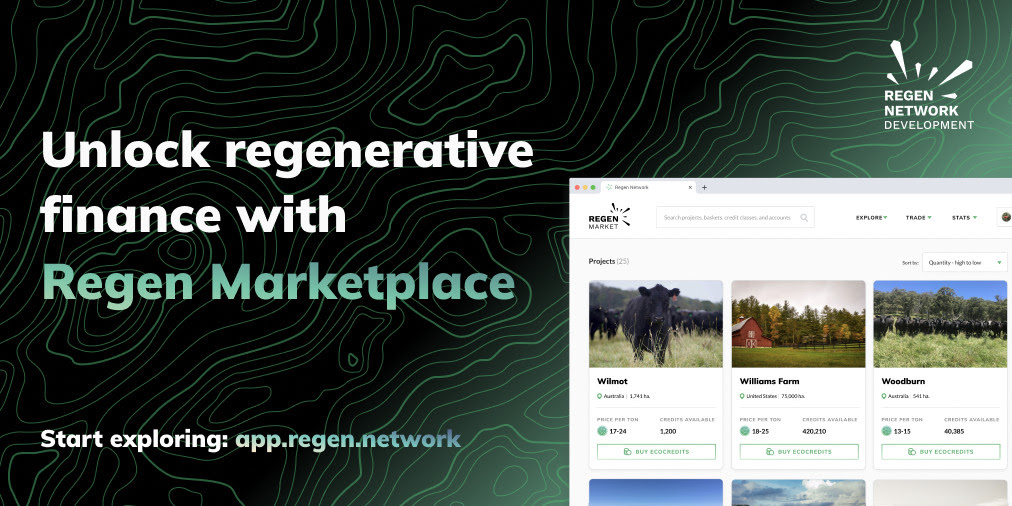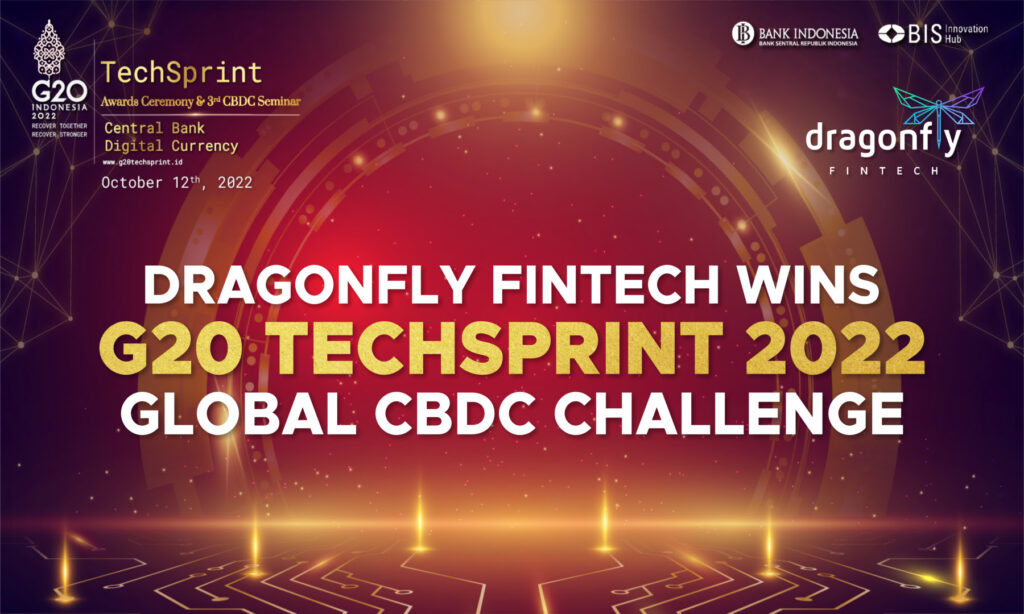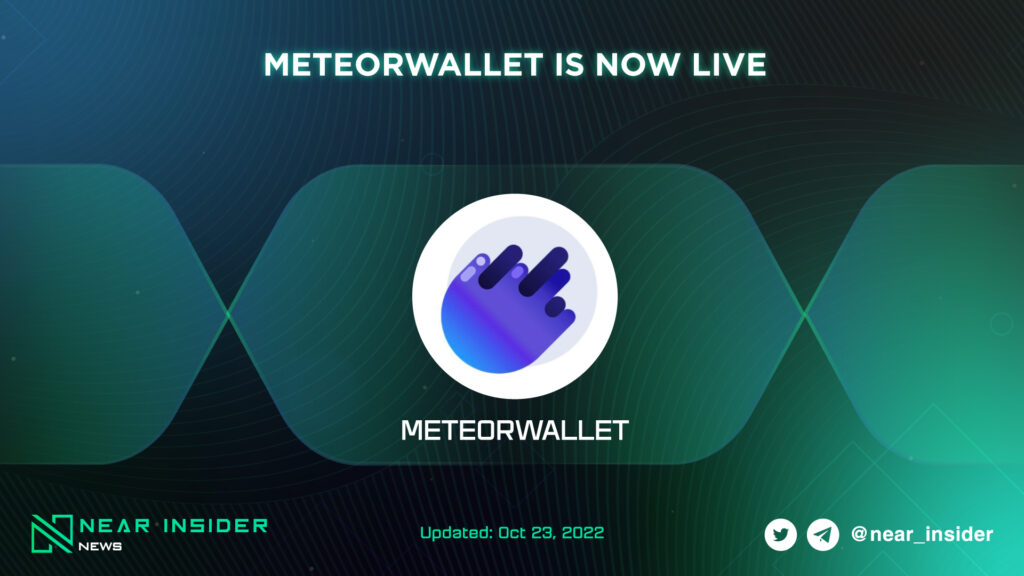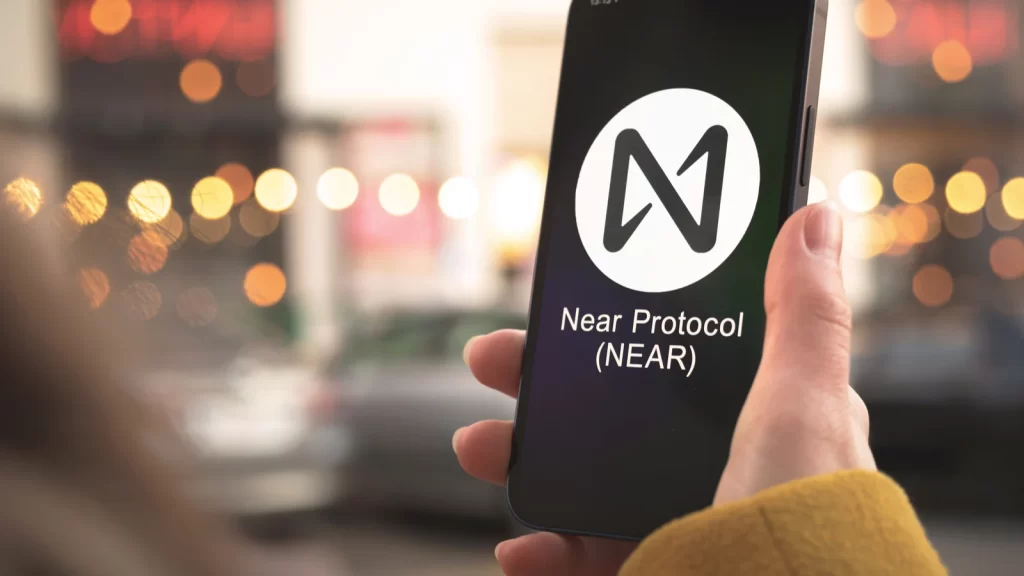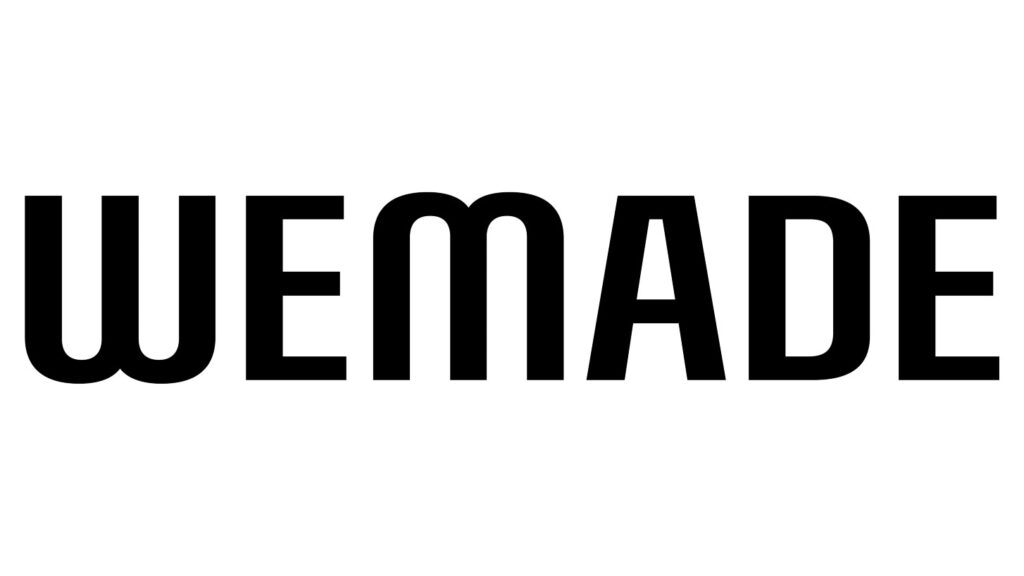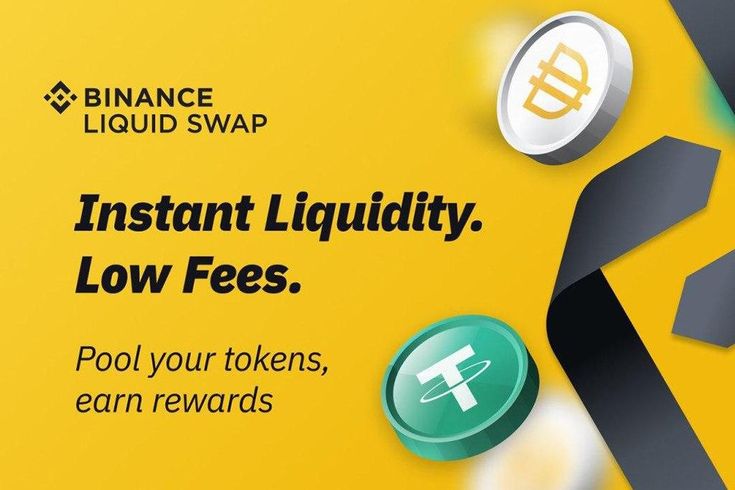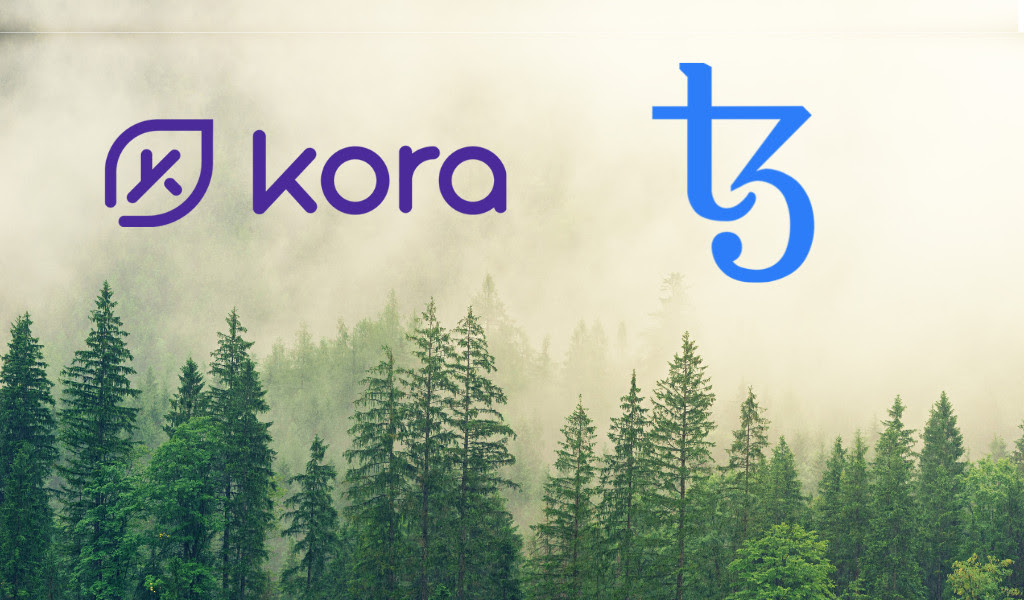London, UK, 31st October, 2022, Chainwire
Cleverminu, a hybrid meme and Inu token, has shared details of its much-anticipated token sale. The public event has seen 1 trillion CLEVERMINU tokens made available to establish a decentralized economy powered by its users. The token sale began on October 27 at 9:00 UTC, supporting price discovery and distributing CLEVERMINU to a global user base.
Part of a decentralized community network, Cleverminu’s native token combines the intricacy of Inu coins with the novelty of meme tokens. This results in a passionate and highly engaged community whose interests are centered around a thriving token-powered economy. Within the Cleverminu ecosystem, users have access to new features the moment they are shipped. These include forthcoming NFT functionality and new token releases.
The CLEVERMINU token sale began with an initial listing price of $0.0000001. The community bought nearly 13% of the total supply (130000000000 CLEVERMINU) in the first round, adding $13,000(130000000000 x $0.0000001) to the liquidity pool. The community then sent 13% of the tokens to a “burning wallet” to increase the scarcity of their tokens and bolster the value.
Another 10% (10000000000 CLEVERMINU) of the total supply was acquired by the community for $0.000001, adding $100,000 (100000000000 x $0.000001) to the liquidity pool, and 10% of the tokens were delivered to the burning wallet . To date, 46% of the total supply has been transferred to a burning wallet, stabilizing the token price and liquidity. Now the sale is going on at 0.00009USD and moving upwards.
“what you see today is just the beginning of what will unfold in the coming months.”
More than one million has been raised in three days and there are over 7,000 CLEVERMINU holders already. The smart contracts powering the Cleverminu ecosystem have been professionally audited by top contract verifiers in the form of HashEx, Quill Audits, Solid Proof, Haze Crypto, Audit Whale, Ethos and George Stamp.
About Cleverminu
CleverMinu is a unique token comprising the best bits of meme coins and inu tokens. It gives holders the power to own and maintain the value of their token. A community-based token, CLEVERMINU is designed to increase every time a purchase is made.
Learn more: www.cleverminu.com
Telegram : https://t.me/Cleverminu
Contact
CEO
Robins jac
cleverminu
support@cleverminu.com
Lotterium is the first online lottery developed and operated exclusively in the world of cryptocurrencies. Lotterium combines colorful slots and familiar online casino visuals, but under the bonnet lies solid lottery mechanics and a fixed RTP of 95%, which is equally high for all games. Lotterium is not just having lots of fun and trying your luck, but also a way to quickly and legally increase your savings in cryptocurrency. The maximum win in Lotterium is 10 Bitcoins (approx. $200,000).
Lotterium: Unique kind of joy
- Lotterium has 30 colorful and exclusive slots of its own make, just to start with, which are created by the best specialists in Las Vegas. You won’t find these games on any other platforms. This is a Lotterium exclusive. Our best developers came up with dozens of exciting game themes, from treasure hunting and time travel to luxury lifestyle. Our designers and animators created colorful and stylish visuals that will take you to the amazing world of excitement and fun.
- In Lotterium, you can only deposit and withdraw game funds in cryptocurrencies, which limits the circle of players to only an audience that is united in spirit, interests and values. What’s more, you can legally place bets and receive winnings in the crypto-lottery from any device and from almost anywhere in the world. Players are limited only by the regulations that apply to cryptocurrencies in their country of residence, and winnings are not taxed.
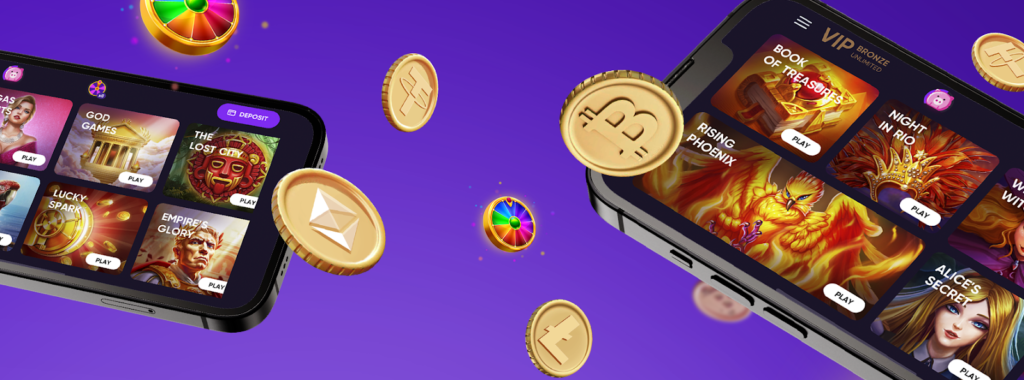
Lotterium features
- 30 colorful games of our own design: immerse yourself in the carnival atmosphere of Rio and ancient Rome, or try your luck in the classic games of Keno and Heads or Tails
- Reliable licenced lottery mechanics
- Betting with cryptocurrency: play your way to increase your savings
- Single high RTP of 95% for all games
- Play in any country of the world, legally and without snags (traps)
- Low deposit and withdrawal commissions thanks to native blockchain integration.
How does it work
Lotterium pre-generates a list of codes from games, forming a kind of digital stack of lottery tickets. Each time the user clicks the Play button, they are essentially pulling one lottery ticket from the stack. Whether you pulled out the winning ticket or not, depends only on your luck. The lottery RTP is fixed at 95%, which distinguishes this service from online casinos.
Playing the Lotterium online is simple: just register on the website or download the app.
At the moment, deposits and withdrawals are made in Bitcoin and Tether, but Etherium, Litecoin and many other cryptocurrencies will join the list in the near future.
Funds are credited in any of the accepted cryptocurrencies and are automatically converted into in-game currency – LTU (Lotterium).
Play your way to multiply your crypto-savings with Lotterium, unique kind of joy.

Oct. 31 — KyberSwap has integrated Multichain to bring even more ease and accessibility to KyberSwap users. So, you can now bridge your token assets from chain A to chain B in a single transaction.
Formerly known as Anyswap, Multichain is the leader in the cross-chain field, with a rapidly expanding family of 69 chains and 2,000+ bridges to service the needs of different and diverse blockchains.
Each blockchain has its own unique services, its own community and its own development ecosystem. For Web3 to reach the next level for consumers, users need a fast, secure, inexpensive and reliable way to exchange value, data and exercise control between the chains. Multichain aims to meet this need.
*Learn more about Multichain here
“This integration takes us a step closer to a reality of making decentralized finance easy and accessible for all with KyberSwap as the only DEX you need to use. Already, users have the best swap rates through KyberSwap. Now, we have eliminated the need for external DApps for bridging and cross-chain swapping,”
– Victor Tran, CEO of KyberSwap.
Why bridge assets to another blockchain?
There is a wide, wide world of Web3. Built on blockchain technology, a blockchain can host tokens, decentralized applications (DApps) and data that are immutable and have no central structure of ownership.
But not all blockchains are the same.
For example, some networks have cheaper gas fees, and some DApps are native to one or a select few networks.
How do blockchain bridges work?
A blockchain bridge allows you to transfer your token assets from one blockchain to another.
Typically, the asset that you intend to bridge will be locked up in the bridge, and a wrapped asset will be minted on your destination blockchain.
For example, everyone knows Bitcoin
$20,505 was the first decentralized currency. As the first of its kind, Bitcoin was only available on its own blockchain. Thanks to bridging, BTC now has wrapped versions and can be used on many other chains, such as Ethereum, Polygon, Solana, Cardano, etc.
*Did you know the KyberSwap team is one of the launch partners to create and bring Wrapped Bitcoin (wBTC) to Ethereum? Learn more about it here.
“The future will be multichain, and bridges will be necessary to enable chains to be connected. We are happy to support KyberSwap as a Web3 infrastructure, giving their users the chance to have cross-chain experiences that are more affordable, swifter, and more secure,”
– Multichain co-founder Zhaojun.
KyberSwap is proud to join the Multichain ecosystem and contribute to building a more cohesive, seamless decentralized finance (DeFi).
About Kyber Network
Kyber Network is building a world where any token is usable anywhere. KyberSwap, our flagship decentralized exchange (DEX) aggregator and liquidity platform, provides the best rates for traders in DeFi and maximizes returns for liquidity providers.
KyberSwap powers 100+ integrated projects and has facilitated over $11 billion worth of transactions for thousands of users since its inception. Currently deployed across 13 chains: Ethereum, BNB Smart Chain, Polygon, Avalanche, Fantom, Cronos, Arbitrum, Velas, Aurora, Oasis, BitTorrent, Optimism and ETHPoW.
KyberSwap | Discord | Website | Twitter | Forum | Blog | Reddit | GitHub| KyberSwap Docs
Europe’s biggest crypto dev shop, BoostyLabs, and Hypra Fund have launched a joint venture studio for early-stage Web3 projects. The initiative also got support from Clust venture builder.
Boosty Venture Studio provides its portfolio projects with the best dev team in Europe, a network of industry-leading VCs, legal and operational support, and an initial investment of up to $300,000. It becomes a co-founder of each of the projects.
Boosty is looking for infrastructure projects, tools for developers and software-as-a-service solutions for Web3. It’s already incubated two startups, with plans to invest in five more by the end of the year. One of them is Stroom Network, a liquid Bitcoin staking protocol on the Lightning Network built by Lido and Bitfury alumni.
All founding partners of the studio are prominent Ukrainian investors and entrepreneurs. They have built successful tech companies with hundreds and thousands of employees. The initiative is led by crypto media veteran Nick Schteringard, former editor-in-chief of Forklog.com.
Igor Pertsiia, managing partner of Hypra, has closed over 50 venture deals throughout his career at TA Ventures. He advises Boosty’s startups on fundraising strategies.
“We are looking for ambitious founders from Ukraine and all over the world to build Web3 together. I’m especially proud that we invest in Ukrainian entrepreneurs. Our country is leading crypto adoption despite the ravaging full-scale war,” said Pertsiia.
Ryslan Tymofieiev, founder of Clust, has built a performance marketing company with 2,000 employees and a presence in 30 countries. Together with Adventures Lab partner Ruslan Drozdov, he mentors Boosty’s startups on operations efficiency.
“The ultimate goal of venture building is to accumulate experience, knowledge and methodologies to help startups overcome the death valley. It’s all about creating a systemic approach to building companies,” added Tymofieiev
Founders can submit an application here to join Boosty’s 2022 batch.
Our socials
California, United States, 26th October, 2022, Chainwire
Regen Network Development released its marketplace application for tokenized carbon and ecological assets, Regen Marketplace. Regen Network allows carbon project developers to originate high-quality nature-based carbon credits to markets, catalyzing regenerative finance solutions to the climate crisis. Regen Marketplace takes advantage of Regen Ledger, the application-specific blockchain which brings transparency and public governance to voluntary carbon markets, built on the CosmosSDK.
Regen Marketplace is a blockchain platform for the origination, governance, and exchange of tokenized ecological assets. Climate impact projects can define, manage, mint, and sell tokenized carbon and other ecological assets in the blockchain-based registry system.
Using Regen Marketplace, blockchains and validators striving to meet their climate commitments are encouraged to purchase, transfer, retire, and bundle tokenized carbon on the blockchain for carbon offsetting purposes, effectively removing carbon dioxide and other greenhouse gasses from the atmosphere. Blockchain dApps are encouraged to export tokenized carbon for DeFi or consumer climate impact apps.
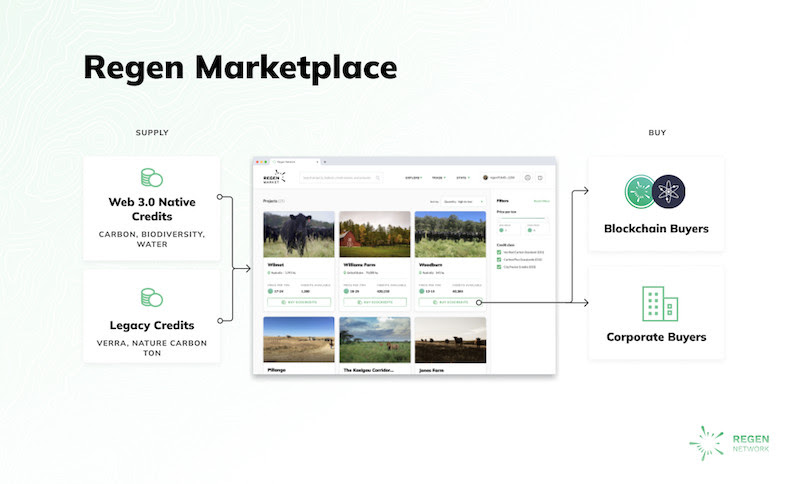
In addition to the Marketplace launch, Regen Network will be introducing the Nature Carbon Ton to the Interchain Economy. NCT will be the first IBC-compatible carbon token for the Interchain economy by the soon-to-be launched Regen Ledger to Polygon bridge, co-implemented by Regen Network Development and Toucan Protocol. This allows for the activation of the Cosmos ZERO campaign, a climate impact initiative for Cosmos-ecosystem blockchains to become carbon neutral. In this campaign, Cosmos-based protocols work to identify their carbon footprints, utilize protocol governance to make a carbon neutral commitment, purchase Nature Carbon Ton from the $NCT:$REGEN pool launching on the Osmosis decentralized exchange, and redeem NCTs for ecocredits, retiring them on Regen Ledger for carbon offsetting claims.
Since 2020, Regen Network Development has partnered with blockchain protocols to become verifiably carbon neutral, including Osmosis, Stargaze, and Cheqd, retiring over 10,000 tons of carbon. In doing so, participants are able to submit a personalized message about their climate impact as tokenized carbon is retired, to be memorialized on the blockchain.
The CosmosZERO campaign aims to catalyze protocol and validator carbon offsetting within the Cosmos-based ecosystem to achieve the goal of net zero carbon emissions on the blockchain.
Gregory Landua, CEO of Regen Network Development, said, “The launch of the Regen Marketplace is a historical milestone in the global effort to address the climate crisis. Bringing more nature-based credits to a market hungry for a supply of high-quality carbon credits will help scale the global effort to reverse climate change. The underlying characteristics of this disruptive new marketplace are critical – radical transparency, community governance, and an open-source tech stack designed to rapidly expand and decentralize the global movement to reverse climate change. Regen Network is a neutral, sovereign appchain to serve the demands of the growing climate impact movement and market for nature-based carbon and ecological assets.”
Regen Network’s strategic launch partnership with City Forest Credits Registry (CFC) aims to kick-start a market for urban forest carbon credits by tokenizing and listing the 2021 City Forest Credits portfolio in Regen Marketplace.
CFC is the US national standard for carbon emission reductions through urban forest preservation and carbon removal through urban tree canopy reforestation. The urban forestry projects featured in the marketplace launch have direct impacts on 20 million Americans in urban communities, represent all the verified city forest carbon across the United States, is the largest urban forest carbon placement in history, and the first blockchain-based urban forestry portfolio.
As Regen Network onboards more partners to participate in the growing ecosystem of climate impact champions, like Moss.Earth, Open Earth Foundation, Earthbanc, ERA Brazil, Shamba Protocol, and Terra Genesis International, the protocol hopes to gain mainstream participation in the end-to-end lifecycle of seamlessly designing, tokenizing, and purchasing carbon credits to retire them for climate change impacts. Over 20 partners are currently designing new ecological assets within Regen Marketplace, giving consumers access to a climate-positive economic system. In 2020, Regen Network sold and retired over 120,000 CarbonPlus Grasslands credits to Microsoft for its Moonshot goal on the Regen Network blockchain.
For more information visit www.regen.network
Gregory Landua, CEO of Regen is available for interview
About Regen Network
Regen Network is an application-specific blockchain designed to serve the demands of the growing climate impact movement and market for nature-based carbon and ecological assets. Regen Network’s blockchain infrastructure originates high-quality nature-based tokenized carbon to markets, catalyzing regenerative finance solutions to the climate crisis.
About Regen Network Development, Inc.
Regen Network Development, Inc. is a blockchain software development company focused on building applications for ecological regeneration on the Regen Network blockchain. RND, Inc has been a maintainer of the CosmosSDK software stack since 2019.
RND Inc. is responsible for the largest Australian-based carbon credit purchase, the largest US-based urban forest carbon purchase, and the largest soil carbon credit purchase in history. RND Inc. sold the first issuance of CarbonPlus Grasslands credits to Microsoft for its Moonshot goal.
Learn more at https://regen.network, Press Kit, and follow us on Twitter.
Press Contact: David Fortson, david@loalabs.io
About City Forest Credits Registry
City Forest Credits is a 501(c)(3) nonprofit carbon registry that manages carbon and impact standards for metropolitan areas in the United States.
Contact
Director of Marketing
David Fortson
Regen Network Development
david@regen.network
805-450-2357
Singapore, Singpore, 19th October, 2022, Chainwire
The Bank for International Settlements (BIS) Innovation Hub and Bank Indonesia under the Indonesian G20 Presidency announced the winners of their jointly organized G20 TechSprint competition last week during a live award ceremony in Jakarta. This third edition of the TechSprint aims to catalyze the development of central bank digital currency (CBDC). Twenty-one finalists from more than 100 applicants worldwide developed and submitted innovative best-in-class CBDC solutions.
Dragonfly Fintech Pte. Ltd. from Singapore won the coveted “Effective and robust means to issue, distribute and transfer CBDCs” category ahead of about 100 participants globally, including some Fortune 500 companies. The other finalists for this category included BitMint, FIS, Mastercard Asia Pacific, R3, Ripple, Roxe CBDC, S.e.A.(Stellar, eCurrency and ANZ).
Other competition categories were “Enabling Financial Inclusion and “Improving Interoperability.” Eleven global expert judges conducted rigorous evaluation and scoring to decide the winners.
With the announcement of this year’s winners, Cecilia Skingsley, Head of the BIS Innovation Hub, said:
“This TechSprint has allowed us to improve our practical work on CBDCs. These technological solutions add to the central banks’ toolbox and provide a springboard for the further development of CBDCs. Our heartiest congratulations to the winning teams.”
Dragonfly’s winning production-ready solution showcased an effective and robust means for the issuance, distribution, and transfer of CBDC for wholesale and retail usage. The submitted solution included the following:
- nCore: Dragonfly’s proprietary blockchain infrastructure, designed for digital banking, enabling regulatory compliance, privacy and control, direct correspondent banking, and interoperability with legacy systems.
- Central Bank Solution: Integrated with an independent central bank-controlled network, a central bank can securely issue and distribute CBDC, execute monetary policy, and have complete oversight over CBDC in circulation. Onboarded financial institutions (FIs) can leverage the network to settle multi-currency transfers.
- mWallet: Integrated with an independently controlled FI network, Dragonfly’s mobile banking solution comes with a modularized backend operating management system that can quickly scale into a full-fledged digital bank.
Dragonfly followed key design principles to make CBDC SIMPLE, with its solution being:
- Scalable: The distributed multi-network design can quickly scale to serve a national CBDC rollout and facilitate cross-border payments.
- Interoperable: Operators can integrate with existing core banking ledgers and external payment and settlement rails.
- Modular: New digital banking modules can easily be plugged in using APIs and SDKs available in multiple common coding languages.
- Programmable: High programmability facilitates the design of innovative services, giving operators a competitive edge.
- Layered: The solution is a ready-to-use stack of future-proof layer one and two technologies.
- Extensible: A multi-touchpoint experience with dual offline capabilities that can serve the unbanked.
Dragonfly’s founder and CEO, Lon Wong, gave his thoughts on the optimal implementation for CBDC:
“For any country to embark on CBDC, I believe an implementation must be able to converge with the existing web of legacy financial systems. The financial burden for a significant CBDC rollout, especially for a vast and spaced-out archipelago like Indonesia, should be minimized through distributed and decentralized technology, preferably in a cloud environment, enabling the lowest possible cost of ownership with no single point of failure.“
Board member and advisor of Dragonfly, Jeswant Gill, outlined next-steps for the company:
“Our avant-garde platform infrastructure allows us to continue building more plug-ins, features, and functions. The modular design facilitates continuous innovation enabling our solution to advance and mature at an accelerated pace, staying the course as a market leader. A key focus moving forward is to engage and collaborate with the Indonesian government to pilot our CBDC solution.“
Winning this challenge serves as an affirmation that cutting-edge technology can be implemented cost-effectively. Dragonfly is inspired to bring its practical solution to emerging economies globally.
About Dragonfly Fintech
Dragonfly Fintech offers groundbreaking technology that is optimally cost-effective and easily accessible. Its customizable blockchain-powered fintech solutions help companies grow revenue and expand offerings while keeping costs at bay. Dragonfly solves legacy problems like complex infrastructure, slow transactions, and low interoperability with a technology suite that allows enterprises and governments to leverage blockchain technology, deploying cutting-edge fintech solutions with fast time-to-market and maximum accessibility.
To find out more about Dragonfly’s products, visit www.dfintech.com. Get in touch by emailing enquiry@dfintech.com.
Contact
Executive Director
Nicholas Watson
Dragonfly Fintech Pte Ltd
nicholas.watson@dfintech.com
NEARStarter, a DAO-governed incubator on Near and Aurora, will be providing its incubation services to Meteor Wallet, a simple and secure wallet on the Near Protocol.
The NEARStarter incubator is a decentralized autonomous organization (DAO)-governed incubation program for early-stage projects launching on Near and Aurora.
In its two years of life, the popularity of nonfungible tokens (NFTs), decentralized finance (DeFi), gaming and other Web3 projects on the Near Protocol has grown significantly, forcing the adoption of high-quality incubators to support them.
As an incubator, NEARStarter not only helps projects like Meteor Wallet receive proper funding to benefit from liquidity but also introduces them to a significant and international crypto network, as well as increasing their social media presence by participation in AMAs or contests.
Meteor Wallet, one of the up-and-coming incubated projects on NEARStarter, is a simple and secure Wallet on the Near Protocol that allows users to collect NFTs, access DeFi and explore the Near Ecosystem. Jonathan Myburgh, head of growth at Meteor Wallet, noted:
“It’s pretty crazy to think that this all started from an NFT collection (Near Tinker Union) with the aim to build products that benefit the Near ecosystem. We started by building a no-code NFT launchpad but soon realized that Near lacked a wallet that matched its UX ambitions to help transition Web2 over to Web3.
Our goal is to be the go-to wallet that makes the Near blockchain simple and secure for users within one super wallet app (identity, financial, social, your gateway to the chain).
Edward Chew is the founder of Near Tinker Union NFT and leads the technical nature of Meteor Wallet. He previously worked at one of the largest e-wallet companies in Asia.
We are grateful for the NEARStarter team that has been alongside us from the early stages of the project.”
The incubator program aims to serve as the Near and Aurora ecosystem’s top growth engine. To do so, they have so far been successful in helping several projects to develop in the Near market with great partners and international Guilds that NEARStarter is collaborating with.
The wallet was founded by an all-star team that also developed top-notch projects like Near Tinker Union, a top five NFT project on Near in terms of volume, and Enleap, a leading NFT launchpad platform on Near.
Ramiro Gamen, head of accelerator at NEARStarter, shared:
“At NearStarter, we see tremendous potential in Meteor’s tech and community, but even more in their founders. They’ve harnessed their experiences from Near Tinker Union and their collective knowledge of the industry to develop an amazing tool for Near users to securely store, manage and exchange their digital assets, with unique features that prove ideal to new users coming into the Near ecosystem or blockchain in general.”
Moreover, NEARStarter incubates other projects, including a lending 2.0 protocol and a Web3 Career Hub.
The NEARStarter acceleration program is already recognized as one of the leaders in the Near ecosystem and has established partnerships with crucial projects, including Paras, Roketo, Shitzu, Fluxus and Decentral Bank among others.
Since the market is expanding at an unprecedented speed, NEARStarter, as an incubator, must constantly seek ways to enhance the services it offers. Future plans for the platform include continuing to expand the utility of the “Vicious Fishes” NFT collection, supporting incubated projects through additional high-quality partnerships, and launching the NSTART initial decentralized exchange offering soon. NEARStarter’s energy is in full swing to keep shaking the Near and crypto ecosystem.
More about NEARStarter
NEARStarter is a DAO-governed incubator acting as the ultimate growth engine for the Near and Aurora ecosystem.
Follow NEARStarter’s social media channels to be at the forefront of the Near ecosystem:
Telegram | Discord | Twitter | Blog | Website
Operated by Banyan Collective, Near Hacks successfully debuted in Lisbon, bringing together 18 builders and founders on Near Protocol under one roof. The Near Hacks Founders House by Supermoon Camp boasted a space for collaboration and creativity, while guests shared impressive projects and ideas.
Guests enjoyed the full Nearcon experience, with top panels and interviews alongside Supermoon gatherings. Supermoon Station, Supermoon’s media arm, met with the guests of Near Hacks House and Nearcon participants for a series of interviews uncovering the latest projects in the Web3 space.
As a part of the Near Hacks Founders House experience, Supermoon Station interviewed builders and founders from the Near ecosystem, including Alejandro Betancourt from Metapool, Robert Chen and Alex Donn from Ottersec, Mitchell Gildenberg from Switchboard, Odyssey co-founders Edward Bramanti and Parker Allen, Seung Hyun Lee from Coineasy, Kevin Mazi from Near Africa’s regional hub, Chad Ostrowski from Aha Labs and Luke Devern from Invoker Labs.
A few special guests attended Nearcon as well, including Nearverse founder William Bear and Baron Davis, a former NBA player who works on applications in the Web3 space.
The series of interviews culminated in a chat with Cameron Dennis, founder of the Banyan Collective, who shared the importance of fostering spaces for Web3 founders to organically connect: “The positive potential of decentralized ecosystems is undeniable. However, decentralization can lack coordination to scale long-term. Through the Near Hacks Founders House, we are starting to create the information highways for key players in the Near ecosystem to multiply their growth and win with other change-makers.”
Near Hacks runs hacker houses and hackathons to promote Near-native project development in the United States. Builders on Near can expect curated spaces to collaborate and learn, scaling their projects from MVP to seed and beyond. Near Hacks is operated by Banyan Collective, a grant recipient of the Near Foundation with the goal of providing Ecosystem-as-a-Service to Near-native projects and businesses. Follow Near Hacks on Twitter to learn more about its U.S. tour.
Powered by the Supermoon Camp team, Supermoon Camp organizes high-impact events with elevated networking experiences for talented professionals, founders and builders from different ecosystems with a mission to elevate the Web3 space.
Socials
Wemade, a South Korean gaming company, announced its plan to issue a stablecoin on its mainnet a few months ago. Currently, it’s servicing 16 blockchain games on its platform, WEMIX Play.
The company revealed the detailed mechanism of the stablecoin, WEMIX$. With the launch date of its own mainnet WEMIX3.0 set on Oct. 20, the crypto market is likely to see a brand new stablecoin very soon.
“Stablecoin is the hottest topic in the crypto scene right now,” said Henry Chang, CEO of Wemade. “It is ‘the one who must not be named’ these days,” referring to the Terra crash from which the crypto market still hasn’t recovered.
However, there are three requirements that a successful stablecoin should meet, and WEMIX$ has them all, he went on to argue.
First, a stablecoin must be stable. That may sound obvious, but we’ve seen stablecoins that were unstable. However, WEMIX$ is stable because it will be issued 100% reserved by USD Coin (USDC$1.00), he explained.
He argued that another requirement for a stablecoin is “stable and native reflexivity,” which means when the demand for WEMIX$ increases, the value of WEMIX, the native coin of the Wemix3.0, should rise as well. That, in return, will expand the WEMIX3.0 ecosystem, and it will increase the volume of trade using WEMIX$.
To secure this positive cycle, a portion of every fee generated by WEMIX$ trades and WEMIX$-based trades will be allocated to the WEMIX holder community. Specifically, the WEMIX team plans to create a staking program and continue to distribute a certain portion of the WEMIX$ fees created in the WEMIX3.0 ecosystem to the staking program.
The third requirement he mentioned is scalability. For the ecosystem to grow, the total volume of its stablecoin must grow accordingly. In other words, the size of the ecosystem’s economy could be limited by its stablecoin’s trading volume.
To tackle this and peg problem, the WEMIX team devised its DIOS protocol for issuing and burning stablecoins. When high demand for WEMIX$ raises its price over 1 USDC, DIOS will issue additional WEMIX$ and swap with USDC to pull the price back to $1. Since the WEMIX$ price was higher than $1, there will be a surplus of USDC, which will be put in reserve, and additional WEMIX$ will be issued to keep the WEMIX/USDC ratio at 1:1. This newly issued WEMIX$ will go to the aforementioned staking program. This process also expands the total volume of WEMIX$ and USDC reserves.
If the price goes below $1, the DIOS protocol will be activated and take USDC from the reserve and buy WEMIX$ on decentralized exchanges. The protocol will burn the WEMIX to pull up its value. Then, the surplus of USDC will be put back into the reserve again, and additional WEMIX$ will be issued to match the 1:1 ratio.
“In order for the digital blockchain economy to operate and become successful, stablecoins are essential, and three requirements are needed to create a successful stablecoin, which are stability, stable and native reflexivity and scalability.” He concluded adding, “WEMIX$ will become a new history of stablecoins, and that history will be the cornerstone of the digital blockchain economy.”
London, UK, 18th October, 2022, Chainwire
Today, Kora, the app which pays users to reduce their carbon footprint, announced an investment from the Tezos Foundation as well as their use of the energy-efficient Tezos blockchain to power their app.
The Kora app rewards climate-positive actions and helps individuals, companies, and organizations measure and reduce their carbon footprint. Users earn Koras for actions that reduce their carbon footprint such as biking, switching to renewable energies, or taking public transportation.
Tezos, an energy-efficient open source blockchain network powered by a globally decentralised network of users and validators, will provide data and payment security for the Kora app.
In commenting on the reasons behind its selection of Tezos, Kora CEO & Co-Founder Gilad Regev comments, “Kora is becoming the most accurate real-time platform for measuring and validating behavior change. Ensuring that our users’ data and payment information is safe and secure has been a critical milestone in developing our platform.
Furthermore, the low-carbon Tezos blockchain enables secure validation of climate action. As a pioneer of the Proof-of-Stake blockchain revolution, and with one of the lowest carbon footprints in the industry with an annual footprint equal to that of 17 persons, Tezos was the obvious blockchain of choice for Kora.”
Gilad continues, “The support from the Tezos Foundation of Kora is a pivotal moment in the growth of Kora, one which will help propel it as both an app- and a movement- to new heights and we look forward to working with Tezos in this exciting chapter of our development. ”
Companies and builders around the globe leverage Tezos for projects exploring the potential for blockchain to be a tool for sustainable innovation. Recently, Cambridge University announced that the Cambridge Centre for Carbon Credits (4C) is building a trusted decentralised marketplace on Tezos that links corporate funders to conservationists via automated and transparent global oracles. Using this marketplace, purchasers of carbon credits will be able to confidently and directly fund trusted nature-based projects.
As part of its partnership, Kora joins the Cambridge Centre for Carbon Credits (4C) as another leading carbon reduction initiative building on the Tezos blockchain.
Learn more about Kora at Kora.app
Explore Tezos at Tezos.com
About Kora:
Kora exists to stop climate change. With a goal to reduce 2.5-3.5 gigatons of carbon emissions annually, Kora works by rewarding the reduction of C02. Koras are earned for every 100 grams of CO2 users reduce. The in-app Kora wallet allows users to keep track of their Kora earnings and send and accept payments from other Kora users or partners and participating businesses, and trade redeem the koras in the low carbon focused Kora marketplace.
About Tezos:
Tezos is smart money, redefining what it means to hold and exchange value in a digitally connected world. A self-upgradable and energy-efficient Proof of Stake blockchain with a proven track record, Tezos seamlessly adopts tomorrow’s innovations without network disruptions today. For more information, please visit www.tezos.com.
About Tezos Foundation:
The Tezos Foundation is a Swiss non-profit foundation that supports the development and long-term success of the Tezos protocol, an energy efficient blockchain with the ability to evolve by upgrading itself. For more information, please visit www.tezos.foundation.
Contact
Tal Dotan
pr@marketacross.com



